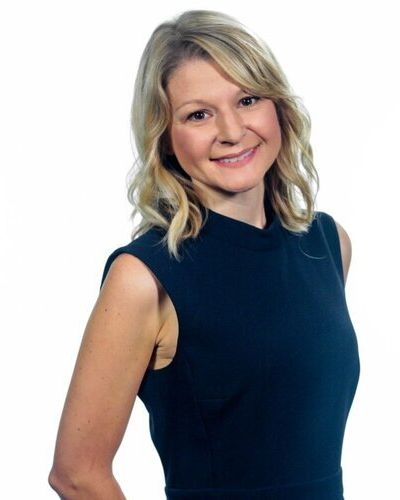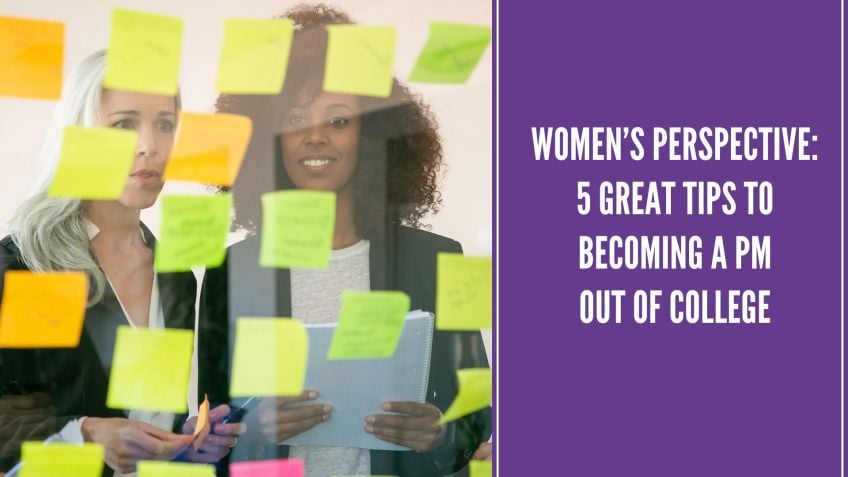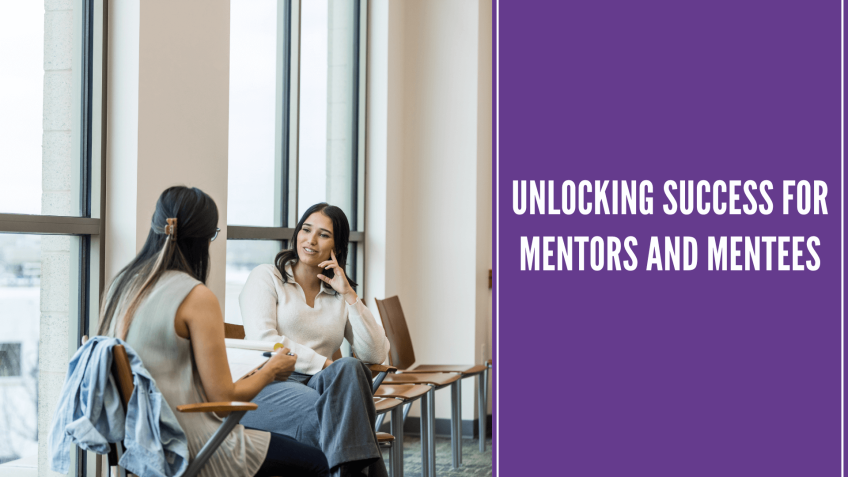Modern Mentorship: Operationalizing Your Company’s Mentorship Model
Tiffany Guarnaccia
CEO & FounderOperationalizing Mentorship within Your Company
Hello, everyone! I'm Tiffany Gracia. Today, we'll be discussing a topic I'm incredibly passionate about - how you can operationalize mentorship within your business. We'll delve into how mentorship ties in with company culture, elaborate on modern mentorship structures, and even touch on a case study that showcases these structures in action.
Demystifying Where Mentorship Fits In
Mentorship, often sidelined and deemed unimportant in the workplace, can prove to be a crucial element when it comes to company culture. Diving into modern mentorship's notion today, I'll be sharing insights on various mentorship structures and a case study to bring some color to the mix.
A mentorship structure that is not just a nod to the concept but a fully fleshed structure is crucial for personal development. This, I believe, is key to accelerating the growth of any organization.
Emerging from the Pandemic: The Shifting Landscape of Office Culture
The post-pandemic period has seen a significant shift in work culture. Loved by some and despised by others, this new landscape of work-from-home and hybrid workplaces has made a significant impact on office collaboration. In such a scenario, it is crucial to zoom out to view the larger picture of how everything fits into the overall company culture.
Mentorship: The Cornerstone of A Collaborative Culture
As a woman in business and a business leader, it is vital to invest in fostering a collaborative culture within the workspace. Here's why:
- Increases productivity: A collaborative culture can increase the efficiency and output of your workforce. Collaboration within teams can lead to novel ideas and innovation, boosting overall productivity.
- Enhances relationships: Collaboration can improve relations within teams. Team members gain a sense of belonging and camaraderie, which can translate to happiness and satisfaction within individuals.
- Produces engaged employees: Collaboration can provide a more fun and interactive work environment that engages employees and fosters their growth.
Introducing a Mentorship Program
Introducing a mentorship program within your company can be a transformative process. At my company, Kite Hill, we introduced a peer-to-peer mentorship program, where employees were matched with others who were one level above them or at the same level. Some elements to consider when introducing such a program include:
- Clear guidelines for both mentors and mentees
- Organized assignment of pairs
- Mandatory participation
- Training and support
Bringing it All Together: A Case Study
The mentorship program at Kite Hill has made a significant difference in our company culture. It's led to our company being named the best workplace and winning various culture and wellness awards. This program has given our employees a platform to grow, collaborate, and learn in an engaging and fun environment.
To conclude, mentorship programs play a crucial role in fostering a collaborative culture within companies. It not only benefits the employees but also significantly boosts productivity, leading to overall business growth. Feel free to check out our additional resources on kitehillpr.com/modern-mentorship or reach out to me at [email protected].
Thank you for joining today, and here's to operationalizing mentorship in your organization!
Video Transcription
Hi, everyone. I'm Tiffany Gracia. I'm so excited to be presenting today. We're going to be talking about mentorship and importantly how you can operationalize mentorship within your company. Now, this is something that I'm so passionate about and I'm excited to share the insights that I have with you.
I hope that today's session is one of the best that you've seen and that has lots of takeaways so far. So let's get into it. What we'll cover today. There's a couple of things that we'll go through in the next 20 minutes that we have together. We're going to start to look at a couple of key things uh that relate to this overarching topic. One is really looking at where mentorship fits in with your culture overall. Then we'll really go into some of the notions that we have around modern mentorship today. Uh I have insights on mentorship structures that I'll share with you and then just to add some color to all of this, a case study that really brings forward some of the structures that we've seen within my own organization. Let me just take a minute to introduce myself. Uh And again, thank you for joining me, I'll have opportunities to answer questions at the end of this session. Uh But if you do have questions as they're coming up, there is a Q and A feature that's available to all of you. You can go ahead and post your questions within that feature within the Zoom bar on the bottom. So I'm someone who has been in the pr industry for over 20 years. I've been within many different organizations from being in house to being the head of communications underneath Ariana Huffington to being within various agencies. I launched Kite hill 10 years ago, this week was our 10 year anniversary.
And before that I launched and ran Communications Week, which was a full industry event that was dedicated to the future of Communications, which was acquired and sold to Reagan Communications. So this is my second company as an entrepreneur. I think one of the main things I've recognized in my journey along the way is that culture is one of your true differentiators. I'm speaking to other fellow founders and other women in technology. And I know that as you look to grow and scale your business, probably thinking about the ways that you're differentiating your company and how you're communicating about your company to the outside world. But I have to say that a part of the secret to our success has really been to lean in to our culture overall, some of our services when it comes to pr and media relations are similar to others, but we've continued to advance through the pandemic. We've hit this milestone of success thanks to the way that we've built out our structure and that's why I want to share it with you today. Um And it's also part of our story, right? Where I'm in the, I'm not in hr, I'm in PR um but I recognize the value of how we communicate, the business to the outside world. Won lots of awards for the culture that we have. So we've been recognized for the work that we've done on this front.
I have to say mentorship is one of the key things that I've recognized from the very first day that I founded the company 10 years ago, this week to where we are today leaning into developing our people and leaning into mentorship structures. That wasn't just a nod to mentorship, but that was something that we could formalize was really how I was able to grow and advance the team. It's something that I believe that other founders can embrace to accelerate the growth of their own organization. We look at the impacts overall. I'm a big believer that you have to zoom out to zoom in um to be able to see where things fit in the overarching picture and how they come together when you're looking at, maybe how you're talking about your existing culture. There's new studies just today that showcased around 60% of people are, are happy with their current employer, which is great. Some of those happiness statistics are going up. Um And that's thanks to a lot of the uh really satisfaction that we're seeing within current work environments.
I acknowledge that all of you have seen the volatility through post pandemic and how we're starting to reshape the future of work. And that's been a big passion of mine. And it's something that we talk to so many of our clients about even in the work that I do day to day, it's not only in being the CEO and founder of this business and successfully running this company, I advise many other CEO S on how they're communicating externally and without a doubt, communicating about your culture has been one of those priority areas so much so that there's the discipline that we're working in now as an agency that's called culture, communication.
So regardless of what area of technology that you're in, this is going to be something that you're pulling forward. So today I'm talking about inship and our secret sauce. But as you're listening in today, it's a great opportunity for you to also zoom out and think about what defines your culture and what initiatives you might be doing already that help with a a collaborative culture that you can formalize and start to communicate externally. Now, what do I mean when I talk about a collaborative culture, right? It's something that of course, as a founder, as someone who's running a business, and we think about the broader technology industry and the shift that we've seen, we acknowledge the importance of collaboration to be able to reach our goals, to be able to continue to accelerate the company overall.
That notion of teamwork, especially in a virtual setting and a work from anywhere and environment that many of us have embraced is something that's so important. It's helping to advance the organization, it's the glue that's keeping us together. So when we think about that and how we shape some of these existing structures, we really think about how we define a collaborative culture and then the benefits overall and mentorship is really a key part of that within our organization. I'm gonna talk a little bit about mentorship and our programs in just a minute. But I think it's really acknowledging that as a fellow woman in business and a fellow business leader that this needs to be an investment that you make and you continue to help to feed as you grow the business because there are clear bottom line benefits, both bottom line and top line benefits to really helping to advance your culture that could take shape in many ways.
And what we've seen, what our clients have seen, what they communicate back to us and the stories we help them tell. It's really about a collaborative culture, helps with new ideas, new idea generation, it increases productivity if you run a business, it's probably uh you know, one of those like opportunities that's music to your ears is looking at, you know, it's not only the increased collaboration and new ideas that you see, but it's also the productivity, what we see and helps our bottom line.
Uh We do want to encourage varied perspectives, it improves your relationships and I have this last one, it is more fun when you think about a collaborative work environment. Um and some of the key things that go into that. So one of the questions that I've gotten as I talk to and I personally love mentoring other female founders and helping them grow and scale their businesses and taking the learnings that I've had from launching and growing two companies now and starting to look at, you know, what is, what is a part of that secret to success for me?
I talked about in the beginning of the presentation that culture has been one of the key differentiators. And it's not just about looking at things from a top line perspective and living by your values if a value is collaboration, but how do you start to operationalize that?
How do you pull that through? And that's been a question that I've had. So we, we started to look at in the early founding of the company around 2016, how we're defining mentorship. And I have to acknowledge that that definition has changed over time. So today, even over the last few years, we've really started to lean into shaping out modern mentorship. And I think hopefully, I'm preaching to the choir here when I start to look at the demand for these kinds of programs in your organization is clear. Um There's certainly, you know, we continue to see the rising tide of how do we get to that point of employee satisfaction coming back to offering programs that increase collaboration and come back to mentorship. So this is just one of many, many headlines that are proof points in the fact that people are looking for mentorship. And today, they are not only looking outside of their organization, but they're looking to their employers, they would be looking to you as to how do I start to create these relationships? I think especially in work from anywhere environment. Um There's an opportunity for us to reshape how we think about mentorship and and define modern mentorship today that can benefit a larger amount of existing employees and potential employees because we can create connections in a virtual environment that that we couldn't before.
Um When you think about kind of pre pandemic environments, even this stat was 76% of people think mentors are important, but only 30% 37% have one we've also started to see. So there's the demand, but there's oftentimes the lack of formal structures, which is why we're talking about formal mentorship structures today. Um there's also the notion of continuing to redefine mentorship. I know I'm talking to other women in tech. Um Many of you are probably familiar with Cindy Gallop and a lot of the rhetoric that she's been pushing out into the market overall. Um But she's certainly an influencer and sharing some of her perspectives and she's been pretty vocal. Um even in the last year about, of course, it's women don't just need mentors. That's the baseline. Women need champions. Uh Women need people who really help to go out there and help them advance. Um And that's, that's what it comes back to, right? How do we create these structures that help others advance? I love the notion when we talk about defining mentorship today. Uh That was also recently shared with me. So I have a separate series called Modern Mentorship uh shared with me with Linda Ong. So she's the CEO and founder of the Cultural Think Tank called Culti. Um And her perspective on mentorship. And what it is is really that you can think of mentors as your fairy godmothers and fairy godfathers that are gonna be sprinkling wisdom along your career path.
So hopefully, that sets up the notion of the need for mentorship that many of you hopefully already embraced. Um So now how do we get it done? You know, we understand the impacts and benefits to your business. We have a good sense of how mentorship is defined today. And just the importance of that for your business and for your existing employees. So when it comes to introducing a mentorship program for your company, there's a couple of things that we looked at at Kite Hill um that I think serve as a good model for how you can introduce it to your business overall. If you're looking at formalizing some of your existing structures. So there's a difference between acknowledging that you were a mentor and being there for advice, which of course any successful leader is there for their team and giving positive advice. But how do you operationalize that?
How do you make that a part of your existing company program? This is what we did at Kite Hill, we shaped out kind of our center. Um And even our North Star is a culture of learning. We needed to support that by a couple of existing programs. Um And you can take this playbook and apply it to your business today. Uh What we did was formalize our peer to peer mentorship program. Why is peer to peer important and a key differentiator? What we did was match people with one level above them or someone who's kind of right close to their level so that there was shared learning at existing levels. When we think about the overarching career progression ladder, they're still getting mentorship from senior members of the organization and from their direct manager. This is a way for us to look at the historical knowledge of the agency, pair together people that are advancing, who can share existing information, who is just one level above them. That also helps some of the existing knowledge that we have. We also started to look at creating a, a bigger opportunity to create Kite Hill University which is on demand knowledge. And that's something that we source from our existing team. And we look at how we can formalize that overall.
And then another key to our success post pandemic was essentially creating a structure that amplifies some of the existing planning we're doing. So we have 90 day professional development plans for all employees. Um And that's something that we saw as just another piece that helped to formalize and then operationalize the structure that we have. Um I think without these pieces, it's hard to pull through that culture of collaboration and a culture of learning because you need the structure to support it. So that's certainly been a key to our success overall. Some of the elements that we have when you think about um if you're looking to shape out your own program and you're modeling it off of what's working in the marketplace. Um I think that there's a lot of demand for mentorship programs. And when you go further to start to examine even we're in the business of communications and some of the external communications around existing structures, um you know, successful mentorship programs are in demand but sometimes they can fall flat within an organization. So we wanted to just look ahead and just like you would do for an event when you start to look at, you know, what could, what's right that we want to bake into our planning, what could go wrong in a premortem?
Um We looked at how, what are the successful elements that we could pull through? Um So one, it's, the company is organizing, assigned pairs as it's peer to peer. But we're the ones that are pairing uh individuals up based on their 90 day plan, learning and development, where we need to fill the knowledge gaps to help each, each team member support each other and further that culture of collaboration, uh participation is mandatory. So oftentimes you look at mentorship programs and it's something uh you think about push versus pull. Uh This is something that we, we place you with a mentor and it's something that the organization is doing for you. There's clear guidelines. Um I'm going to go over some of the guidelines as examples. And at the end of the presentation, I have information that I could share and there's training and support. Um So I think it's important to look at all of these elements. If you're looking at, you know, what is the secret to success of pulling this forward of operationalize your program, you want to give clear guidelines and then training and support. So that that program continues and that people feel like they have the resources they need from their employer.
Um And by the way, you know, this isn't something you might envision a program like this to be at a company of 100 people or more. We started this program when our agency was only 20 people. Um We really wanted to make sure that there was a lot of learning that was shared and that the culture was collaborative overall. Uh the example timeline that we have, I think it's also a resource that we give to anyone who's participating in the program, looking at the kickoff, we're sharing goals. Um If you're setting and sharing goals, you're more likely to achieve them. That's not only a part of this, it's a part of life. Um I encourage everyone to look at higher goal setting. Um We do encourage monthly check ins. Uh There's an opportunity to review goals and then there's a process. So it's almost similar to, I'm sure a lot of you women in tech are looking at the sprint process you might go through. We also do pr sprints here, but you can look at, it's just that ongoing program evaluate and then repeat when you're looking to roll this out.
Um We have a couple of examples of mentor guidelines and tips overall, I'm gonna give you the top line, but there's a great resource on the kit website. It's kit pr backslash modern dash mentorship Australia at the end there all of this information, including a download, so you can download the tips that we have in our mentorship guidebook. If you're looking to pull this forward, um Within that we have tips for mentors, including be honest, be consistent and be a listener. Um That's one of the key things that we tell anyone who's looking to be a mentor or even you're continuing to advance within your organization, um be an active listener and use the power of query in those in those uh individual sessions. We also offer tips for mentees. So I think it's, you know, this is all going to if you're operationalize it, are you giving people the information and the structure that you need? So it's also just being in the right framework and introducing how to be a great mentee, keeping an open mind, establishing your goals. It's a key part of it and being agile and being proactive. So that's a key thing in this structure. You really want to advise.
Um you know, if you're working with mentees, let's say if you're doing it formally within your company or if you're a mentor in other programs. So for example, I have a program at Kite Hill that I'm a part of, I'm also part of a group called She runs it and I'm a part of their executive class and their mentorship program. So the advice I give is that the mentees are driving that relationship, you want to prompt them to come prepared. So you can really be efficient with that time and that relationship overall. Um We also as a part of that, this is examples of what's in the guidebook and the structure um offer dos and don't for meetings. Um I think this is one of the key things. So if you're running a business or if you're looking to introduce this program, one of the key things you think about how is this, how can you ensure that this time is efficient if we're investing in this time as a business? If I'm saying that this is going to help my bottom line, if I'm going to make sure that my team members are sharing insights and information that's really going back to the work and helping them deliver best in class work.
Well, you have to give them the structure, you have to give them guidance. Um So a lot of that is not only starting with the 90 day plans and goals, but even tips for running meetings efficiently. Um You certainly don't wanna have your team overloaded with the amount of meetings that they have. Um And then from there, we have the same donors for mentees and mentors overall. So it's just a really great example of some of the content that we've put together and the framework. Again, this is available to you via the kit website. If you want to take some time and pull it back to your own organization. I know we're getting short on time. Uh So I do want to just give a quick case study as to all I know we share a lot of information overall, a case study on Kite Hill. How does it come together and how has it made a difference for my company? Why am I so passionate about this topic? Um You know, it's really looked at how we wanted to up level our culture and, and formalize this program. It's something that has translated not only to making a difference to our culture, but it's been a key part of why we've won awards for our culture. And it's all about collaboration and the support we provide each other and it's a part of our story.
So I think a lot of what we look at is how do we start to look at, telling our story to a broader environment. Um So this is the solution that we had and the program that we had here including some of the framework. Um So some of the culture wins that I mentioned and agency wins overall from being named the best place to work focusing on, you know, where the Wellness Awards and the top B to B agency of the year for the work that we've done. And all of that is thanks to our culture of collaboration and mentorship. Of course, we pull that forward. I'm gonna leave you with one last example of how you can um today was all about embracing this structure, formalizing this structure, how it makes a difference to your company's story and can make a positive impact on your culture. It's also something just like everything else that you can iterate over time and continue to be agile given the current environment. So just like we did, you know, we moved from a formalized structure focus then in 2020 on our virtual structure. But now just this year, um in conjunction with our 10 year anniversary, we pulled it forward. Um And we introduced some of these elements in our in person retreat. So we brought that back to our company and actually created a mentorship structure within our in person retreats.
Um Some, you know, great opportunities to, to pair people together to encourage that system overall. Um And uh we enable people to meet together over a three day time period and then present back the learnings they have from each other within uh a team structure. So great examples of how it goes from start to finish. How do you introduce the program, continue to debate and pull it forward? Well, thank you so much for joining today. I hope you enjoyed today's session and that you found a lot of the insights and information that I shared useful, but I know I had so much to share within this short time period that there's more information available to you. Um You can go ahead and go to our modern mentorship page and download our guidebook. That's kite hill pr dot com, modern slash mentorship or you can reach out to me um me and the team. Hello at kite hill pr dot com. I'm always, always happy to help other women advance their businesses, continue to grow in technology and share the insights that I have learned along the way on my journey. Thanks so much for joining today.






